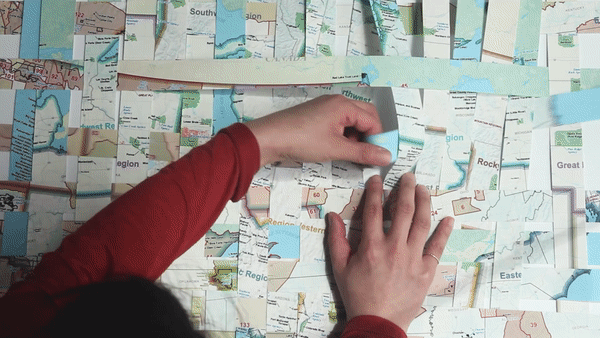Grounding Lessons
This project is an ongoing self-exploration about finding the meaning of belonging and my relationship with nature. Through this journey, I engage in textiles, worms, soil, history, and mapping to contextualize my research on regenerative ecology and its indigenous roots. By understanding how my role as an individual plays in the larger context of inequalities in the food system, focused on Native American communities.
My engagement with textiles will speak to visualizing biodiversity, polyculture planting techniques, and fabric measuring tools to reflect the three sister garden planting plans. Textiles are adapted in various forms, becoming the craft itself rather than just a means to an end by applying the building blocks of weaving structures to other mediums. Video collaging and prints affirm the multiplicity of this project —the layered history abstracted and woven together. Regeneration and soil health is most apparent in my embodied gestures in the vermicompost bins, and my winter leaves ground preparation.
Image documentation of my engagement in textiles, worms, and soil.
Video collage of engagement process.
History and maps are the main components of my active unlearning of the dominant notion of US history and the Western way of constructing cartography and representation. My methodology acknowledges the indigenous cartographic framework of storied, oral history — to bring light to alternative world views and methods.
Reflection
I began over a year ago engaging with soil regeneration and re-engaging with textiles. I never imagined this newfound relationship I would have with my work. The multimodality of my art practice has helped me pull apart, reassemble, and connect storied history, regenerative ecology practice, and indigenous culture. This has allowed me to create these research artifacts that speak of my exploration, investigation, and understanding of my role as an artist.





